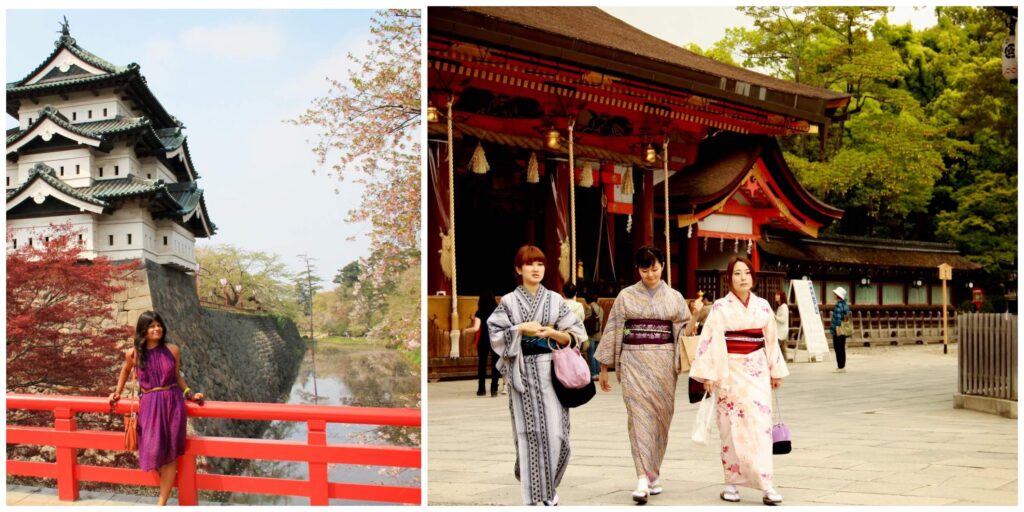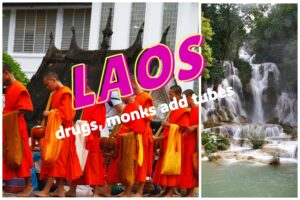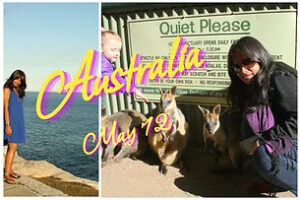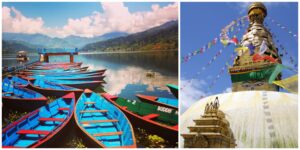Whether it’s the futuristic skyscrapers, the robots or the gothlolly culture of Tokyo, the sakura and castles in Hirosaki, the thermal hot springs of Mount Fuji or the ancient Buddhist and Shinto temples and the Geishas of Kyoto, Japan is dripping with wonder, culture, quirk and beauty at every corner. Even if I say so, I consider myself quite cool to have traveled to Japan, on a solo trip, way before it became the hot travel destination it seems to be now. In fact, back when I traveled to Japan (May 2013), hardly anyone I knew had been there.
While one could spend months exploring and soaking in this unique country, my corporate job permitted me only so much so I spent a total of 10 days in Japan, covering Tokyo, Kyoto, Mr Fuji and Hokkaido.
Japan is a timeliness country and while it may have progressed even more since my trip, a lot hasn’t changed. Except perhaps the visa. While I received a beautiful, cellophaned pink visa stuck on my passport, travelers now have to contend with a rather clinical evisa.
Here’s how I did a one-week trip to Japan under $1000 of today or roughly INR 75,000 back in 2013
Costs:
Booked my flights from Bangalore – KL – Tokyo and back on AirAsia. (costs mentioned at the end of the post.)
Japan tourist visa cost: Rs. 750 (I remember it being one of the cheapest visas I’ve had!)
How to travel intercity in Japan?
Now a lot of people will tell you to take a JR pass, the pass that gives you access to Japanese extensive fast train route including Shinkansen (the bullet train) but JR pass is extremely expensive. I found a cheaper alternative in ‘Willer Express‘,(non sponsored) a national bus line in Japan. I bought a 4-trip pass for 15k yen or roughly 8k INR and did four overnight bus trips on it. (Bonus, I also saved on accommodation on these 4 nights while covering the distance)
Here’s my 10-Day Japan Itinerary and trip details
Day 1- 4 Tokyo
Day 5 – Hirosaki
Day 6 – Fujikawaguchiko and Onsen at Mt Fuji
Day 7 & 8 – Kyoto
Day 9- Tokyo
Day 1- Landing in Tokyo and meeting my Indian Couchsurfing host
I flew from Bangalore with a 6-hour layover in Kuala Lumpur and I used the Malaysian 24-hour transit visa to get out and get a coffee near the Petronas towers, almost exactly 10 years after my first trip to Malaysia.
I reached Tokyo at around 8pm, took the Keikyu Airport Express train to my host’s place in Mishima — yes back then I was big on Courchsurfing, having both hosted and been a guest at my homes. His house was my first real experience of what a typical Tokyo house looks like – a compact apartment with a judicial use of space, so much so as the back of the bathroom door doubles up as a clothes drying rack and the entrance foyer – a kitchen! (for the uninitiated, Tokyo is the mostly densely populated city in the world and the real estate prices here are amongst if not the highest in the world, forcing people to get really economical with space saving furniture and architecture.
Day 2- Shibuya Crossing, partying in Roppongi and crashing overnight at a Mcdonald’s
So on my first official morning in Japan, I set out to explore and be a tourist. While I walked, I noticed the clean and well laid out roads with not ONE piece of trash, the vending machines for everything from chips to gum to piping hot tea for noodles, ice cream, and the multi level bicycle parking spots! (If you’re a vegetarian from India, you can carry those Top Ramen cup noodles from back home as there’s no dearth of hot water in Japan!)
At the metro station, I had my first taste of the famous Japanese discipline where I noticed people strictly queued up even on the escalator on one side, and let the other side be free for those walking! (Imagine this in India!)
Once I reached the Harajuku station (Somehow I can still hear the animated voice on train’s saying the “Harajukku”!) I walked to the Shibuya square and sat myself at a Starbucks and watched the famous Shibuya crossing from 20 floors up. The Shibuya crossing is called the world’s busiest crossing and it might as well be but the Japanese are so organised and disciplined that the crossing works like clockwork, not a single step out of line. One can spend hours just watching this hypnotic action at the crossing.

But I had things to do so I walked around aimlessly and soon took a metro to the upmarket Rappongi hills area hoping to visit the Google Japan office (Back then I worked at the company). On my way I saw the tiniest alleys with the Izakayas or tiny bars with many executives trying to wind down after a tiring work day as the infamous brutal Japanese work culture plays out in front of you. At around late night, I landed in a club where I partied with a bunch of expats and travelers till about 3 am, and then there was no way to make it back to my host’s place without taking a $200 taxi so I crashed at a McDonalds as Tokyo residents do after public transport stops running. They either take up a pod in a “capsule” hotel or crash at many restaurants and stores that keep their shutters open overnight — Japan is an extremely safe country and it’s common to see restaurants and stores with no security or locks.
Day -3 – Watched Black Sabbath and Tool live at the Tokyo Ozzfest
Back from the late night shenanigans and that walk of shame after crashing at a McDonalds the night before, I did get some sleep during the day and at noon, my CS host and I left to attend the OzzFest, a rock festival that had the likes of Black Sabbath, and my favourite band at the time Tool performing live. After a 2-hour ride to the venue in the outskirts of Tokyo, we spent the rest of the day head-banging and grooving to some heavy-duty rock, metal, and running into an acquaintance from India who’d come all the way to Japan to attend the Ozzfest! What are the odds!

Day 4 – Hachiko, the most loyal dog, Akihabara the robot district, and a 4-storey sex store
This was the part of my Japan itinerary I was most looking forward to. I met a Facebook friend from India in Shibuya, at the memorial statue of Hachiko, the legendary Japanese dog who stayed loyal to his deceased owner for years after.
On the metro to Akihabara, the Manga and Anime capital of Japan and perhaps the world, she gave me a brief primer on Miyakazi and a few notable Japanese anime characters. And sure enough, Akihabara glittered with gaming studios, shops stacked with anime and manga comics, games, merch, toys, gifts, and 30-40 feet high manga robots doing promotional rounds in open trucks! We also ended up going to a 4-storey sex toy with the most bizarre contraptions we’d ever seen! (I’d leave it to your imagination if we bought anything.)

Post some shopping in Akihabara, we met the guy who’d sent me an invitation letter for my tourist visa who showed us around the Tokyo park with a view of of Tokyo tower, Eiffel’s tower orange, Japanese cousin!

He took us to a tiny alley full of “ramen bars” in Shinjuku, and while I couldn’t have anything being vegetarian (back then Tokyo was hell for vegetarians.), when I couldn’t take it anymore, I helped myself to some rice and gravy from my friends’ ramen bowls. (yes the gravy was incredibly spicy and a flavour I’d never tasted before.)
I had an overnight bus to Aomori to catch so I legged it to the Shinjuku bus terminal, but thanks to no internet and a major language barrier, I couldn’t get there in time and missed my bus by a mere 5 minutes!
And that was my first taste – if bitter – of the famous Japanese punctuality. Everything works on a schedule and if a bus is supposed to depart at 10:40pm, it will depart at 10:40pm on the dot.
No amount of pleading or explanations helped and I had no option but to book the next bus on the spot shelling out an extra INR 5000 for the trip! Well here was my famous “one disaster per trip” I wasn’t waiting for.
At around 11pm, this new bus rolled in and I got in, surprised to see, my seat which reclined and along with it, an umbrella-like helmet for the head. So wait, Japan doesn’t do full-sleeper buses like in India but has a little umbrella on the seats to give the head some privacy?! Okay! Another in the series of little quirks of Japan.
Day 5 – Cherry Blossoms and castles in Hirosaki
I made this trip to Hokkaido, extreme north of Japan, only to catch the last of Sakura or Cherry blossoms for the season. They’d done blooming and shedding elsewhere in Japan but Hirosaki had another week or so left. And even though it was an expensive trip just to see some flowers, one doesn’t come all the way to Japan and doesn’t see its most iconic symbol. (Heck even my visa had the cherry blossoms on it.)

Once at the 500-year old Hirosaki Castle complex, I was canopied by rows and rows of sakura wherever you walked. Pink, white and everything in between. And the ones that had shed, were laid out on the ground like a carpet so it was! – sakura on top, under your feet, and everywhere else you looked. At some point in the noon, I just sat myself on a bench, ate a packed lunch of some bread and fruit under the shade of a Sakura tree, wrote in my journal about the moment along with some fallen sakura petals, and just soaked it all in. I’m sure if I had internet on my phone and I was on Instagram back then, I’d have been too busy uploading a Story to enjoy this moment!
But after a while, Sakura fatigue set in and I had a bus scheduled back to Tokyo the same day which I didn’t want to miss (the horror!) so I left Hirosaki castle by 5pm, walked to a nearby restaurant, got myself a light dinner of whatever vegetarian I could find, and got into my bus by 9pm.
By next morning I was back in Tokyo, and this time I took a 3-hour train from Tokyo to Fujikawaguchiko for a day trip to Mount Fuji highlands.
Day 6- Annual Shibazakura festival at the foothills of Mount Fuji
At around 10am, I reached Fujikawaguchiko a lakeside resort town at the foothills of Mount Fuji to visit the ongoing annual Shibazakura festival and since I wasn’t going to stay overnight, I left my luggage at a paid locker at the Fujikawaguchiko main bus station. Now Japan has a culture of celebrating its flower blooms and many festivals are organized around such times. (I missed the ones in Tokyo for Sakura blooms.) The Shibazakura festival happens around Fujikawaguchiko and the views are breathtaking. Behold the imposing Mount Fuji, with that signature volcanic ash skirt, from behind a lake and a carpet of millions of pink and purple flowers!

To be honest, I found the sight even more surreal than the sakura at Hirosaki just the previous day! And the best part was this seemed to be a local experience as I didn’t see any tourist other than me but mostly Japanese families out to enjoy a beautiful spring day.
Day 6- An onsen or hot spring bath in a Ryokon, Mt Fuji
After spending a couple of hours taking in the view, I hopped on a local shuttle bus to go to where I’d experience another of Japan’s must have experiences: bath in an Onsen.
A lot of the world cultures have their own elaborate bathing cultures centred around natural hot springs — India has the hot spring pools in Kheerganga in Parvati Valley and elsewhere, Turkey has the Pamukkale springs and the Hamams, Georgia has the sulphur baths in Tbilisi, and Japan has the Onsens. The Onsens are natural springs of hot mineral water which are supposed to not only cleanse but also heal. To take bath in one, Japan has a limited number of Ryokons or hotels around the Mount Fuji area around that have an inhouse Onsen. While most require at least an overnight stay, I found one that can be used just for the Onsen without the stay. I paid around 1000 yen or about Rs. 600 for a 2-hour session which included a hot tea seated on the Tatami mats at the end of it.
Even though my next destination was Kyoto, there’s no straightforward or easy way to travel from Mount Fuji to Kyoto and the best, if longer and more expensive way is to come back to Tokyo. So I got on another 2-hour bus ride to Tokyo and reached the bus terminal by 8. I took an overnight Willer bus from Tokyo to Kyoto.
Day 7 -Temple Tour in Kyoto
I was in Kyoto by 8am, and I checked into my Indian host’s place and without wasting any time, I bought a boxed meal and set out to start my temple run. Kyoto, once the capital of Japan, is an ancient and traditional Japanese city full of temples, Buddhist and Shinto shrines, and other traditions, making it a must-visit for a true immersion into ancient Japanese culture.

Taking a public bus everywhere, I first went to the gilded Kinkaku-ji, a Zen temple by a pond. Then I hiked up the sprawling and ancient wooden Ginkaku-ji temple which is famous for its sakura lined canal in season (Just missed by a couple of weeks), the 5-tier Pagoda style Toji temple, and then the grand Daitokuji temple with its orange pillars and beautiful carved architecture. After some aimless wandering, catching a sumo session in practice, school kids being packed off in buses, little kitten flitting about, checking out a local nursery, I was in the Kyoto backpacker district. At this point, my host joined me and showed me around the quaint restaurant area with Izikayas and tea rooms and restaurants with lanterns outside.
Day 8 – Fushi minari Shrine, Matcha, and first look at Geishas
The next day I took a metro and right outside its exit, found myself at the stunning Fushiminari Shrine. While the shrine itself is beautiful, it is eternalised in travel iconography because of its rows of thousands of brilliant orange Torii Gates (that are each donated) across a wood trail that leads to view points.

There’s no shrine at the top of the summit and one can walk up as much as they want to and come back so I walked up till about the halfway point, the number of Torri gates decreasing beyond and returned to the shrine gate.
After Fushi Minari, I hung out with a Brazilian backpacker in the tourist district and discovered Japan’s love for matcha – matcha flavoured tea, matcha icecreams, matcha smoothies, and even Matcha kitkats are regular items enjoyed all over Japan. (maybe the secret to their long lives?)
A little weighed down by temple fatigue, I ended my temple run after visiting the packed Kiyomizu temple on a hill and then walked around the Geisha district. I felt like I was walking through an exotic fairytale book seeing all the Maikos (young girls who are training to be Geishas.) in their beautiful Kimonos and stamping away on their wooden slippers.

Once back in the city centre, my host told me about the theatre that hosts Geisha concerts but my time in Kyoto was coming to an end so the rest of Kyoto, including the famous Bamboo forest in Arshayama had to wait until my next trip.
I took an overnight bus back to Tokyo later that night and reached Tokyo at the now familiar Shinjuku bus terminal by 8am.
Sanja Matsuri-Mikoshi festival, day partying in Yoyogi park, Shopping at 100 Yen Stores in Takeshita Street
Today was going to be my last proper day in Tokyo and Japan so I didn’t want to waste any time lingering, even though I wanted to rest after the intense last one week.
I got myself to the famous Sensoji Buddhist shrine and as luck would it, there was a festival going on, Sanja Matsuri-Mikoshi (or the 3 shrine) festival which seemed to have men dressed in costume taking out possessions of a deity, while playing instruments amidst a general vibe of merry-making. I was feeling to lucky to have accidentally bumped into such a local culture experience even on my last day.

Soon, I was at the Yoyogi park, Tokyo’s own Central Park where I saw a different, less traditional and more unhinged side of Japan. I’d experienced on my trip that the Japanese are fond of drinking, but it’s not all serving themselves pretty Sake pints in the cute Izikayas of Kyoto or Roppongi’s fancy clubs, but also on the street festivals and parks like this. Whole families and groups were out in the park on their mats, guzzling beer from cans, eating, and celebrating. I even ended up joining a local dancing jig and felt my last few hours couldn’t be more appropriate for a place like a Japan.

Shopping in Japan, Kawaii, and Daiso
Finally, I wanted to tuck in some shopping before flying out so again, I stopped at the famous Takeshita street, the high-street of Tokyo where all the bizarre and avant-garde fashion lives, walks and struts. Though Tokyo is prohibitively expensive and my cheap Indian ass wasn’t going to splurge much so I just contended with a Daiso (a 100-yen store) and got myself some “Kawaii” items, manga miniatures, a cotton Kimono suit for my niece, a geisha doll, some chopsticks, matcha treats, and of course a fridge magnet. The Japanese phrase Kawaii roughly means cute and its physical manifestations means small child-like baubles and things that add a bit of “cute” to otherwise mundane things like phone covers, school bags, suitcases and even architecture. Don’t be surprised to see 100-floor high business buildings with an inflated Hello Kitty at the entrance for a touch of Infrastructural Kawaii!)

And just like that, I took the Yamanote line for the last time to get to my host’s place, cooked a nice Indian meal for him and me and took off for the Tokyo Haneda Airport for the last time.
Day 10 – Flying out back home and another stop in KL
I took an early morning flight out of Tokyo to KL, this time with a 12-hour layover. So I hung out with my friends from a previous trip. On my way to the Sulewang Mall, I discovered I’d lost my wallet with some cash and dried Sakura flowers! But well, I had the photos for posterity and another wallet bought from the 100 yen store.
Costs of the 10-day Japan trip from India
(All costs in INR)
Return flights from India: Rs. 30,000 (I got them really cheap because of an introductory promo offer by Air Asia.)
Japanese tourist visa: Rs. 750
Willer 4-Bus Pass: Rs 8000
Ozzfest Ticket: Rs. 7000
Food: Roughly about 500/day * 10 = Rs. 5000
Onsen: Rs. 1000
Entrance Tickets To temples: Rs. 1000
The 1 bus ticket I had to buy: Rs. 4000
Local trains and buses: Rs. 5000
Shopping: Rs. 5000
Misc: Rs 1000
So my Japan trip roughly cost me about Rs. 80,000 or $1500 (as per 2013’s conversion rates) for 10 days without any accommodation costs factored in. If you’re staying in hostels or hotels, add another 20-30k to this and your Japan trip budget would be around at least Rs. 100k or $1200 in today’s conversion.







One Thought to “10-Day Japan Itinerary From My Solo Trip: The Complete Guide For A Budget Trip From India”
I will follow your itinerary. Thanks for such detailed and highly passionate travel blog.